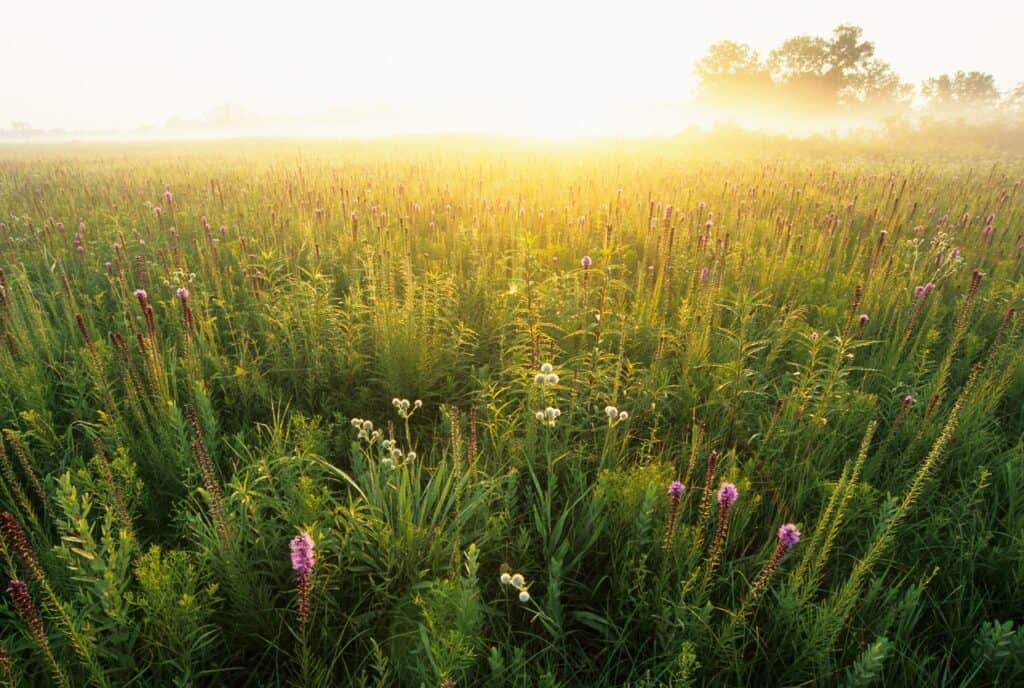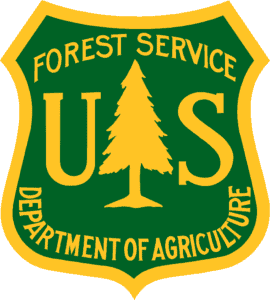Are you a Native student looking for research experience this summer?
The Native American Research Assistantship (NARA) Program offers an opportunity for Native undergraduate or graduate students to gain experience during a paid 3-month summer research project with USDA Forest Service Research and Development (USFS R&D) scientists. Established in 2014, NARA provides training for careers in natural resource and conservation-related fields, promotes Native student advancement in the wildlife profession, and elevates Indigenous Traditional Ecological Knowledge (ITEK) within federal research projects.
USDA Forest Service R&D
USDA Forest Service R&D works at the forefront of science to improve the health and use of our Nation’s forests and grasslands. Together, The Wildlife Society and USFS R&D are committed to enhancing and sharing the diversity of human experiences and backgrounds within the community of natural resource professionals and are excited to continue our partnership for the 10th year of this Program. Click on the link below to read this year’s application instructions or scroll down for more information.

Current Projects
Project 1: Science to Support High Priority Data Needs at Stream Restoration Sites in the U.S. Forest Service Southwestern Region
- Project Objectives: The objectives of this project are to provide science support to the Southwestern Region and the Carson, Santa Fe, and Gila National Forests by collecting baseline, implementation, and/or post-implementation monitoring and assessment of aquatic organism passage (AOP) and stream restoration sites. The project leaders have collaborated with National Forest System staff to identify aquatic organism response to AOP projects and the effects of stream restoration on groundwater storage, riparian soil carbon, and greenhouse gas emissions as high priority data needs.
Project 2: Drought Recovery in Northern Grasslands (DRyiNG): Understanding Mechanisms and Indicators of Flash Drought in Northern Grasslands to Inform Post-Drought Grazing
- Objectives: The increasingly common occurrence of flash droughts in the water-sensitive grasslands of the Northern Great Plains (“northern grasslands”) challenges land managers when deciding their seasonal and annual grazing practices. Our research will provide mechanistic, species-specific information needed to predict how northern mixed-grass prairie will respond to new climate circumstances, and therefore how rangeland management practices may need to change to maintain ecosystem health and productivity.
Project 3: Validating Methods for Detecting Pregnancy Status in Rare Forest Mesocarnivores
- Objectives: This is a laboratory-based project to validate methods for assessing reproductive status in free-living mesocarnivores (wolverine, Canada lynx) from non-invasive measurement of hormone metabolites in scat.
Project 4: Fulfilling Tribal Wildlife Research and Management Needs
- Objectives: NARA student will assist the Project Leader in the development of sections of a comprehensive Tribal Wildlife Management Plan (TWMP) requested by the Mescalero Apache Tribe (MAT). The NARA student will research, draft, and edit technical sections of the TWMP in a remote capacity if relocating is not an option. If relocation for the student is possible, they can assist in the development and coordination of local community focus groups to understand wildlife needs and interests of the tribal community, especially as it relates to ITEK and information provided by elders and practitioners within the community.
What Students Can Expect
Paid assistantships are available for Native students interested in wildlife ecology and natural resource research and management. Students will engage with representatives from TWS while learning from and working with an interdisciplinary team of researchers at USFS.
Students will participate virtually or in-person (see project description) in laboratory or field-based data collection, data entry, and analysis. The work experiences gained during the assistantship are intended to benefit the program participants, and comprise one of the many facets of training and educational opportunities provided to the students during the assistantship. Students can also expect to improve their oral and written communication skills as they will be provided the opportunity to assist in publishing manuscript(s) in peer-reviewed journals, popular press, and/or present findings at scientific meetings along with project scientists (dependent on travel funding).
How to Apply
DEADLINE PASSED: Please check back next winter (2024/2025) for more information on the 2025 NARA program. You may still access the 2024 Application Instructions below as a reference, but we are not accepting application materials at this time.
To apply, students will need to prepare the following materials:
- A cover letter indicating to which research project you are applying
- Resume/CV
- Official or unofficial academic transcripts
- Documentation of tribal affiliation or descendancy
- Two letters of recommendation
Please review the application instructions available through the link below for specific project details and necessary qualifications for applicants.
Past Projects
2023
Bat Diversity Along the Klamath River Before and During Dam Removal (USFS)
Ryan Matilton, member of the Hoopa Valley Tribe studying at Cal Poly Humboldt, worked with Ted Weller from the U.S. Forest Service. The objectives of this project were to quantify the diversity and activity of bat species along the Klamath River in northern California before and during dam removal in 2023.
Bison Grazing and Grassland Birds: Evaluating Prairie Restoration on Midewin National Tallgrass Prairie (USFS)
Tanikwah Lang, member of the Klamath Tribes studying at the Oregon Institute of Technology, and Sabrina Sanchez, studying at Texas State University, worked with PhD student Alejandro Chávez Treviño and Susannah Lerman from the U.S. Forest Service. The objectives of this project were to determine how bison grazing improves the diversity of native vegetation during the restoration of prairie ecosystems and determine how grassland birds respond to bison grazing during prairie restoration.
Identifying the Potential Socio-Economic Effects of Chronic Wasting Disease (CWD) on Native Americans (USGS)
Katie Easter, member of the Cherokee Nation studying at Northeastern State University, worked with Scott Chiavacci from the U.S. Geological Survey. The objectives of this project were to identify the socio-economic impact categories of CWD on tribal communities and develop a research prospectus to quantify those impacts in collaboration with one or more Tribal communities.
Hyperspectral Identification of Harmful Algal Blooms in the Klamath Basin and Beyond (USGS)
Hannah Jimenez, member of the Cherokee Nation of Oklahoma studying at Columbia University, worked with Natalie Hall from the U.S. Geological Survey. The objectives of this project were to provide reference data needed for ground-to-space validation of satellite algorithms and for identification of potentially toxic Harmful Algal Blooms in U.S. lakes and rivers, as a first step towards development of an early warning system using satellite data to detect toxic cyanobacteria in freshwater systems.
Tribal Data-Network Infrastructure Plan – Transfer of US Geological Technology to Tribal Nations (USGS)
Electa Hare-Red Corn, member of the Pawnee Nation of Oklahoma and studying at the University of Arkansas, worked with Andy Waite from the U.S. Geological Survey. The objectives of this project were focused on the operation and maintenance of USGS long-term data networks, including groundwater-monitoring wells , streamgages, tide-elevation gages , and water-quality stations to address management of water supply, flood, water quality, and ecosystem concerns.
2022
A Delicate Balance: Supporting white-tailed deer (waawaashkeshi) habitat and forest sustainability on Keweenaw Bay Indian Community (KBIC) lands
Sabrina Sanchez, from Texas State University, worked with Serra Hoagland on long-term monitoring of treated and untreated Mexican spotted owl (Strix occidentalis lucida) territories on tribal lands in New Mexico. This project built upon existing occupancy and reproduction datasets from Mescalero Apache tribal lands with the goal of reducing fire risk and threats to Mexican spotted owl habitats.
Long-term monitoring of treated and untreated Mexican spotted owl (Strix occidentalis lucida) territories on tribal lands
Antoinette Shirley, from Michigan State University, worked with Stephen Handler, Rachel Tarpey, Erin Johnston and Pam Nankervis in Michigan on a collaborative project on white-tailed deer—or waawaashkeshi—habitat and forest sustainability on Keweenaw Bay Indian Community lands. This project gathered information about the role and location of deer to help the tribe make decisions about the tradeoffs between forest health and wildlife management.
2021
Long term monitoring of treated and untreated Mexican spotted owl (Strix occidentalis lucida) territories on tribal lands
Callie Kammers, of Lake Superior State University, worked with Serra Hoagland, CWB, in New Mexico on long-term monitoring of treated and untreated Mexican spotted owl (Strix occidentalis lucida) territories on tribal lands. This project built upon existing long-term occupancy and reproduction datasets in treated and untreated Mexican spotted owl breeding territories on Mescalero Apache Tribal Lands with the overarching goal of reducing fire risk and threats to Mexican spotted owl habitat on tribal lands.
Bison grazing and grassland birds: Evaluating prairie restoration on Midewin National Tallgrass Prairie
Jerret Carpenter, of Oklahoma State University, worked with Susannah Lerman at Midewin National Tallgrass Prairie. The objectives of this project were to determine how bison (Bison bison) grazing improves the diversity of native vegetation during the restoration of prairie ecosystems, and how grassland birds respond to bison grazing during prairie restoration. Results were utilized to design and implement a grazing management program for prairie restoration and management that promotes desired conditions for grassland bird habitat.
Tracking Native Species Distributions with Environmental DNA
Zachary Arquette, of Haskell Indian Nations University, worked with Kellie Carim at the USFS National Genomics Center for Wildlife and Fish Conservation on a collaborative project using environmental DNA to understand distributions of Pacific lamprey (Entosphenus tridentatus) in the Columbia River basin. This species once sustained tribes of the lower Columbia River including the Yakama, Umatilla and Nez Perce people. Results from this work were used by tribal biologists to protect and restore Pacific lamprey throughout their historic range.
2020
Bat surveys and greater sage-grouse vegetation studies in the Buffalo Gap National Grassland of South Dakota
Elizabeth Hotchkiss was a graduating senior at California Polytechnic State University-San Luis Obispo. Over the summer she was mentored by Brian Dickerson, a researcher at the Rocky Mountain Research Station. Together they worked on bat surveys and greater sage-grouse (Centrocercus urophasianus) vegetation studies in the Buffalo Gap National Grassland of South Dakota.
The U.S. Forest Service is a Partner of TWS
Contact
For more information or questions, please contact:
Tricia Fry
Education and Awards Coordinator





